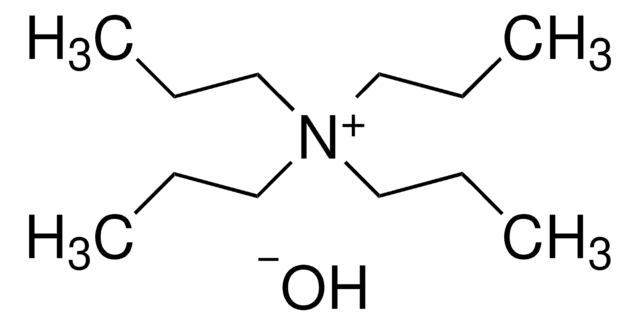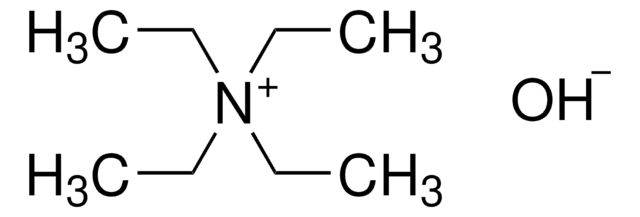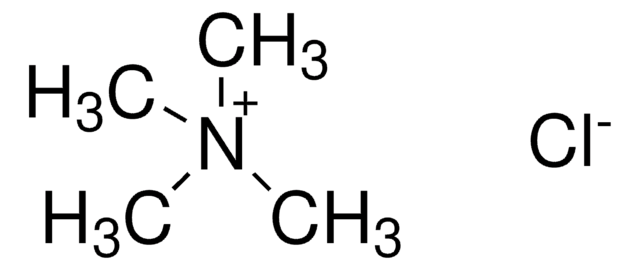88005
Tetrapentylammonium hydroxide solution
~20% in H2O (T)
About This Item
Produits recommandés
Forme
solution
Concentration
~20% in H2O (T)
Impuretés
≤0.05% halides (as bromide)
Traces d'anions
sulfate (SO42-): ≤500 mg/kg
Groupe fonctionnel
amine
Chaîne SMILES
[OH-].CCCCC[N+](CCCCC)(CCCCC)CCCCC
InChI
1S/C20H44N.H2O/c1-5-9-13-17-21(18-14-10-6-2,19-15-11-7-3)20-16-12-8-4;/h5-20H2,1-4H3;1H2/q+1;/p-1
Clé InChI
JVOPCCBEQRRLOJ-UHFFFAOYSA-M
Catégories apparentées
Application
- As a model compound in the studies of the effects of quaternary ammonium salts on the formation of clathrate hydrates of methane.
- To maintain the pH of the aqueous phase to study the adsorption dynamics of nanoparticles at fluid interfaces.
Mention d'avertissement
Danger
Mentions de danger
Conseils de prudence
Classification des risques
Skin Corr. 1B
Code de la classe de stockage
8A - Combustible corrosive hazardous materials
Classe de danger pour l'eau (WGK)
WGK 3
Point d'éclair (°F)
Not applicable
Point d'éclair (°C)
Not applicable
Équipement de protection individuelle
Faceshields, Gloves, Goggles, type ABEK (EN14387) respirator filter
Faites votre choix parmi les versions les plus récentes :
Déjà en possession de ce produit ?
Retrouvez la documentation relative aux produits que vous avez récemment achetés dans la Bibliothèque de documents.
Les clients ont également consulté
Notre équipe de scientifiques dispose d'une expérience dans tous les secteurs de la recherche, notamment en sciences de la vie, science des matériaux, synthèse chimique, chromatographie, analyse et dans de nombreux autres domaines..
Contacter notre Service technique









